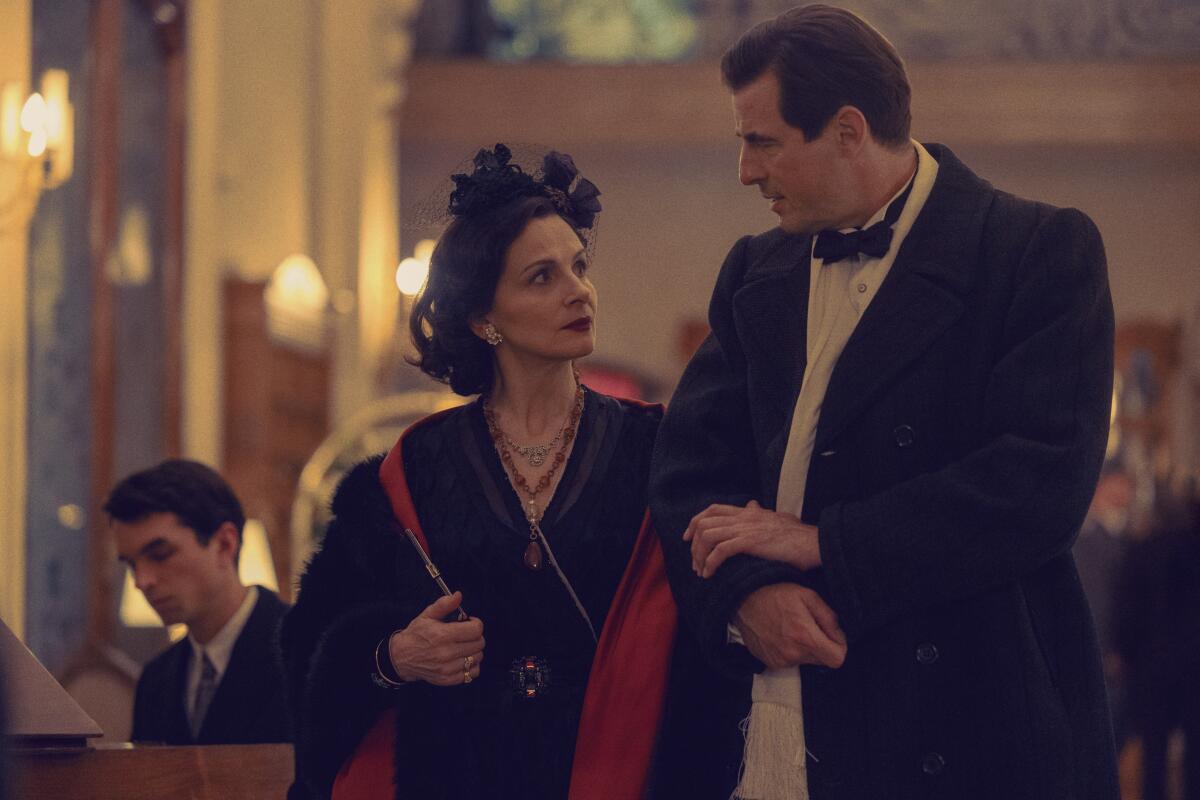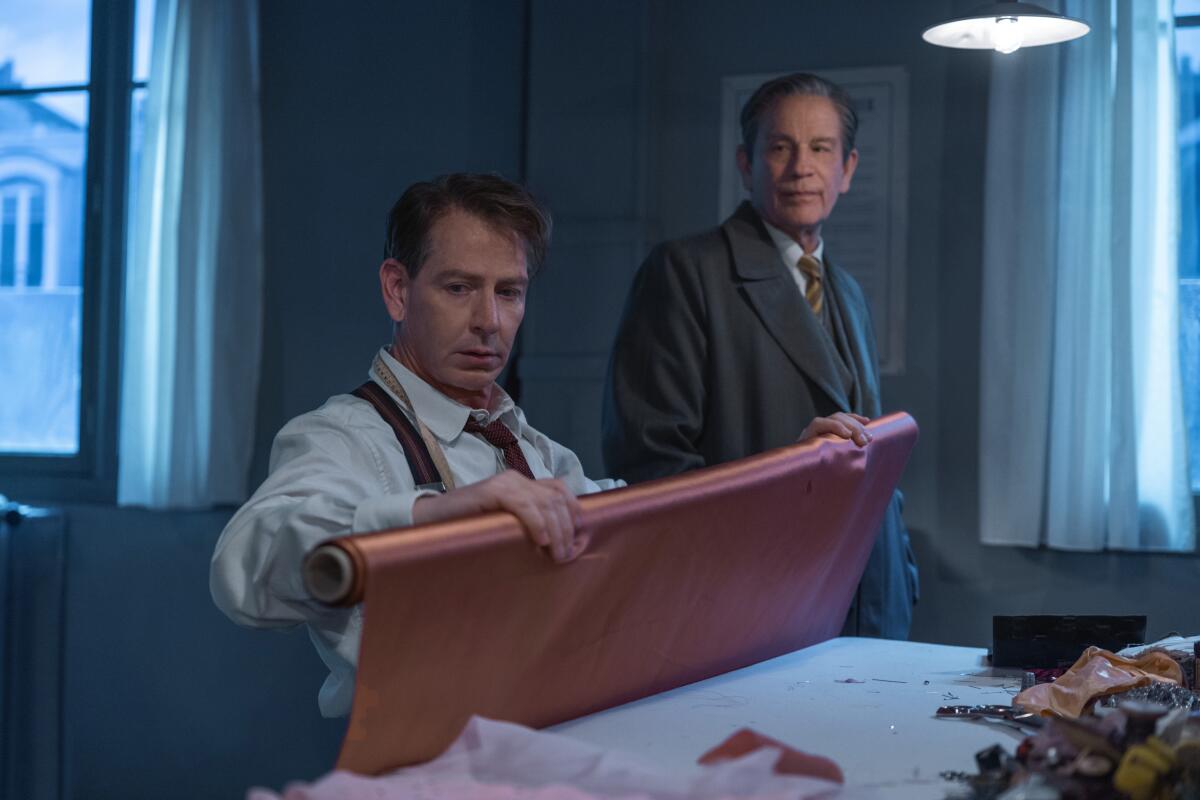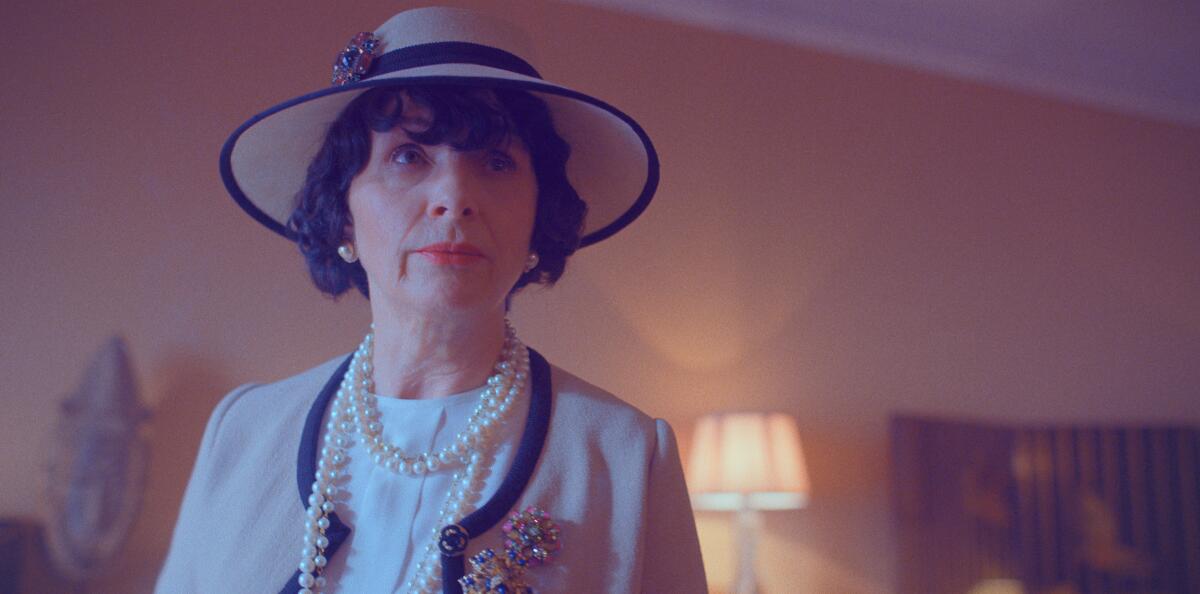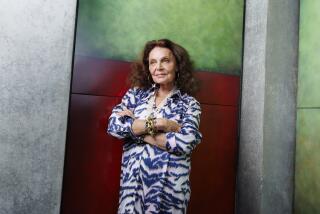‘The New Look’ explores the choices made by Coco Chanel and Christian Dior in World War II

When most people hear the name Dior or Chanel, they think of rarefied objects — custom-made Oscar gowns, decadent perfumes or handbags that cost as much as a mortgage payment. They think less about the historical figures behind the luxe labels: Christian Dior, whose first collection introduced the “New Look” signaling a return to ultra-feminine extravagance after the deprivation of World War II, and Gabrielle “Coco” Chanel, the trailblazing designer known for her chic bobbed hair and ever-present pearls.
And as for the hardships they endured — or moral compromises they made — on their way to becoming fashion icons? Who has time to contemplate that while browsing duty-free?
But “The New Look,” a series debuting Wednesday on Apple TV+, explores the lives of Dior and Chanel, the creative visionaries and rival designers who helped redefine modern couture. Created by Todd Kessler, the 10-episode drama traces more than a decade of style history, from the dark days of World War II to the mid-1950s.
Rather than painting a hagiographic portrait of these designers, the series takes an unflinching look at their activities during the Nazi occupation of France, when everyone — even those now celebrated as paragons of taste and style — made painful choices in order to survive.
For Dior (played by Ben Mendelsohn), then an obscure designer working for couturier Lucien Lelong (John Malkovich), this means begrudgingly making dresses for the wives and girlfriends of Nazi officers in order to support his family. It’s a particularly tormented path for Dior, whose beloved sister Catherine (Maisie Williams) is a fighter with the French Resistance and is eventually sent to a concentration camp.
For Chanel (Juliette Binoche), the compromises amount to something closer to outright collaboration with the Nazi regime. In the premiere episode, Chanel embarks on a romantic relationship with Hans Günther von Dincklage (Claes Bang), known as “Spatz,” a German officer; schmoozes with high-ranking Nazis including Heinrich Himmler (Thure Lindhardt) — the architect of the Holocaust — and Walter Schellenberg (Jannis Niewöhner); and voices frustration with the Wertheimers, her Jewish business partners.

Later episodes show her traveling to Madrid at the behest of Nazi intelligence in an attempt to broker a secret peace agreement with her old friend, Winston Churchill, and fleeing to Switzerland after the war rather than face punishment as a “horizontal collaborator,” the term applied to women who had sexual relationships with the German occupiers.
‘What would I have done?’
Unlike other portrayals of the designer — in children’s books and biopics — that frame Chanel’s story as the empowering tale of a woman who overcame poverty and sexism through the sheer force of her creative genius, “The New Look” delves into some of the unsavory aspects of her life that have received scant scrutiny over the years.
The goal, Kessler said in a video interview, was neither to present a sanitized version of history nor to condemn people who faced unthinkable options during the darkest era in modern history.
“We all think we would do quote-unquote the ‘right’ thing. But if the right thing is to live, then Chanel did the right thing for Chanel,” he says. “Hopefully the audience will put themselves in the shoes of the characters and question, ‘What would I have done? There but for the grace of God go I.’ I have no idea what I’d do. I’m just relieved that I don’t have to face those choices in my life.”
When it came to telling this story for TV, Kessler was thoughtful about which elements of the history he embellished or altered for dramatic purposes. Although there are some composite characters and compressed timelines, “I tried to stick as closely as possible to events,” he says.
The writer, who worked on “The Sopranos” and later co-created “Damages” and “Bloodline,” recalls reading about the 50th anniversary of Dior’s first collection in 1997 and being intrigued. “I realized instantly that while I knew the name, the brand, I knew nothing about the person,” says Kessler.
Decades later, he was inspired to revisit the subject after the death of his friend, James Gandolfini, in 2013. He saw parallels between the actor, who achieved huge creative success in middle age and died of a heart attack while on vacation in Italy just weeks shy of his 52nd birthday, and the designer, who also achieved huge success in middle age and — spoiler alert — died of a heart attack at 52 while on vacation in Italy.
“I really wanted to figure out a way to write about someone [whose] success brings them so much, changes their life, brings them the public perception of success. But privately there is a person in conflict with what the public wants and who they are,” he says.
His research began with the designer’s autobiography “Christian Dior and I,” in which “he talked about the extrovert salesman and the introvert creator as two parts of his personality that were at war with one another,” Kessler says. “At the end of the memoir, he says that it’s taken him 10 years to understand that both parts of his personality are needed, and he looks forward to the next chapter of his life.” (A few months after the book was published, Dior was dead.)

Another important resource was “Christian Dior,” a biography by Marie-France Pochna, who became a consultant on the series and introduced Kessler to representatives of the house of Dior. “I explained my ambition and what I was hoping this could be and that there would be no way for me to tell the Dior story just based on the information that was publicly available,” Kessler says. The company gave the production access to Dior’s sketches and collaborated with costume designer Karen Muller Serreau on re-creations of some of his iconic designs — and did so without setting any parameters on the story. “All they were offering was information. There was no filter,” he says.
In the course of the research, it quickly became clear that Dior’s younger sister, Catherine, would play a central role in the narrative. Arrested by the Gestapo in 1944, tortured and imprisoned at Ravensbrück, a Nazi concentration camp for women, Catherine eventually returned to Paris and was reportedly the namesake for Miss Dior perfume, launched in 1947, but the trauma of that experience was formative, says Kessler. “There really is no Christian Dior, the designer, in the way that he is known to the world, without Catherine.”
Chanel: Trailblazer to secret agent
The Chanel part of the story came into focus more gradually, as Kessler attempted to understand the historical context of Dior’s New Look.
“What world was he stepping into when he launched his first collection?” he says. “At the start of the war, Chanel was the most famous, wealthiest fashion designer in the world. Then she stopped designing when the Nazis came to Paris, refused to design for them but lived at the Ritz [a haven for German occupiers] and had a relationship with someone affiliated with the Nazis. Chanel was the queen, and then [after the war] Dior dethrones her and becomes fashion royalty.”
Adding to the dramatic contrast between the characters, Dior and Chanel had very different design aesthetics: Chanel was about stylish comfort and freeing women from the corset, whereas Dior was about nipped waists and full skirts that projected an idealized female form.
When it came to Chanel, Kessler had more material to wade through, reading at least 17 books about the designer and her work (including “The Secret of Chanel No. 5: An Intimate History of the World’s Most Famous Perfume,” which he described as “wildly entertaining”) plus memoirs and other primary sources he used to cross-reference the events chronicled in the series.
He came to view Chanel, who died in 1971, as a woman who was ahead of her time, if not able to transcend its cruelty.
“Chanel started her business when it was illegal for women to have bank accounts in France. She was an orphan and when her mother died, her father dropped her and her sister off at a convent,” he says. “She was 10, and really grew up with nothing. It’s just an incredible, trailblazing story of someone who then rises to the top.”
Kessler also learned a great deal about Dincklage, her German lover — including the fact he was married to a Jewish woman and was brought to Paris by the Nazis “to essentially court the elite French women, have intimate relationships with them and try to get information from them about French troop movements,” he says.
Though Chanel’s long-term relationship with Dincklage was never really a secret, her reported role as a Nazi agent and other wartime activities have come to light in more recent decades.
“A lot of the information about her activity during the war came out in late ‘80s and ‘90s” because of Schellenberg, the Nazi intelligence official, he says. “He testified at the Nuremberg trials [which were held in 1945-46]. And he offered so much testimony at the time that they agreed to seal it so that way by the time his testimony came out, everyone [implicated] would be dead. In that testimony, it’s revealed that he used Coco Chanel as an operative, code name Westminster, all of that.”
Chanel’s alleged role as a Nazi agent was also investigated in “Sleeping With the Enemy: Coco Chanel’s Secret War,” by Hal Vaughan, which also painted Chanel as a virulent antisemite. When the book was published in 2011, the Chanel group — which is still owned by the Wertheimer family — issued a statement downplaying her Nazi connections.
“What’s certain is that she had a relationship with a German aristocrat during the War. Clearly it wasn’t the best period to have a love story with a German even if Baron von Dincklage was English by his mother and she knew him before the War,” it read. (Chanel representatives did not respond to a request for comment about the series.)
Kessler thinks that one can debate Chanel’s motives in attempting to negotiate a peace agreement between the Nazis and the British.
“You could flip it around and say she was on a good mission,” he says. “But at the same time, through my many years of research, the fact that she was interacting with the Nazis and going on that mission is irrefutable.”
In the end, “The New Look” is not about naming names but about the resilience of beauty and the artistic impulse, Kessler says.
“It was certainly one of the darkest moments in 20th century history, and maybe in all of world history in the world,” he says. “It’s not as if two years into the occupation, the French knew we only have another two years. It could have been for the rest of their lives. There’s no end in sight. So the ability to actually feel again, to dream again, to appreciate beauty again. It’s very visceral.”
More to Read
The complete guide to home viewing
Get Screen Gab for everything about the TV shows and streaming movies everyone’s talking about.
You may occasionally receive promotional content from the Los Angeles Times.






